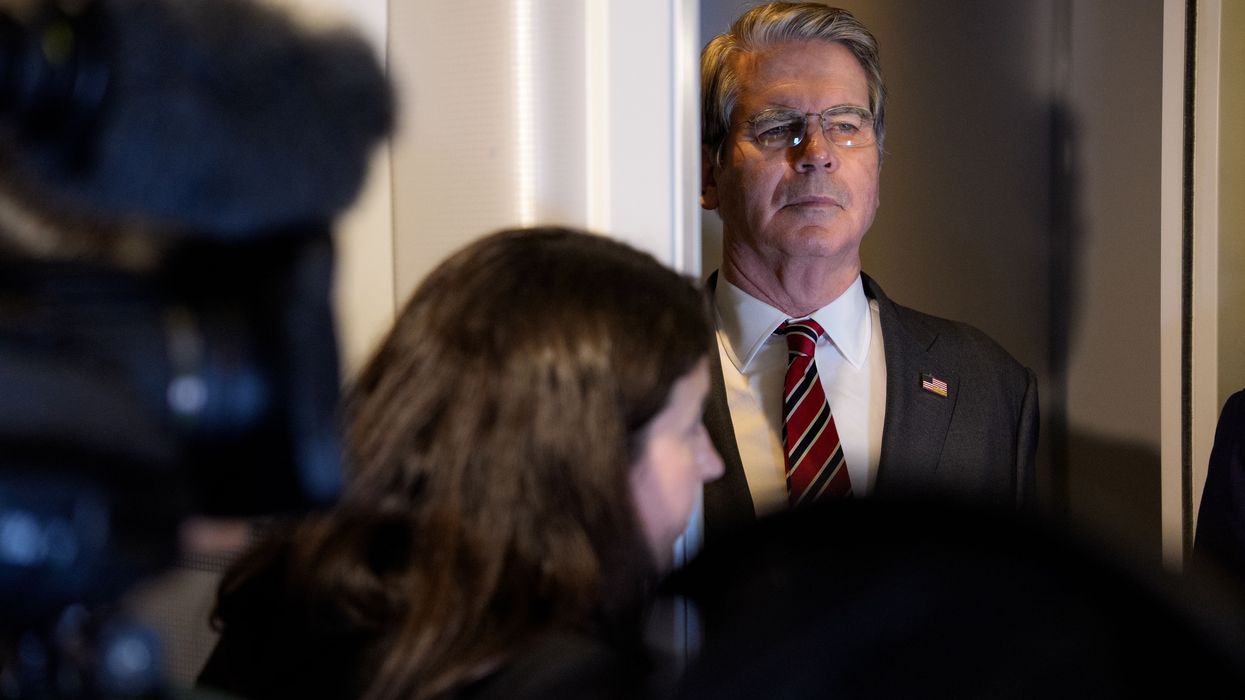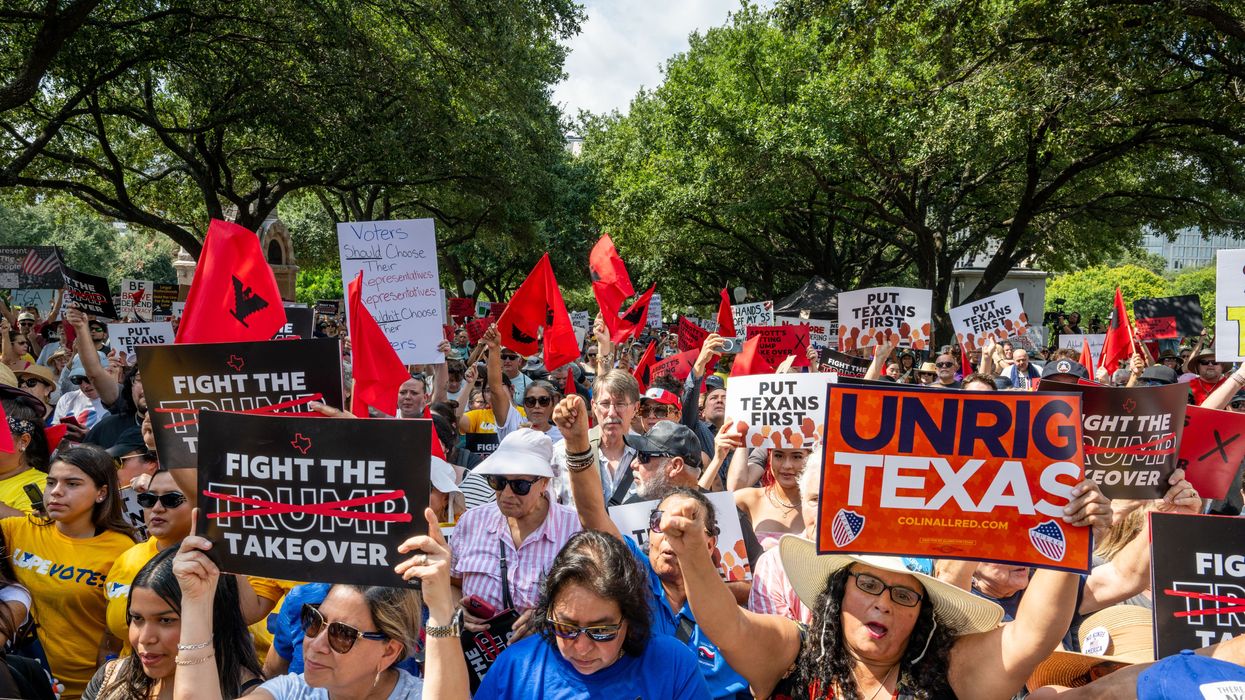August, 11 2009, 05:41pm EDT

As Gas Prices Rise, Consumers Face Increased Threat of Oil Dependency
New analysis shows state-by-state ranking of oil vulnerability
WASHINGTON
Rising gas prices, combined with the economic downturn are making
people more vulnerable to changes in oil prices, according to new
analysis by the Natural Resources Defense Council. The report also
shows that many states are taking significant steps to reduce oil
dependence through smart clean-transportation policies.
Especially
with today's economic challenges, Americans face a growing threat from
our nation's dangerous addiction to oil," said Deron Lovaas, NRDC's
transportation policy director. "This report shows how important it is
for states to promote clean energy policies that will reduce our
dependence on oil, while also reducing global warming pollution.
The
report, "Fighting Oil Addiction: Ranking States' Oil Vulnerability and
Solutions for Change," provides a detailed look at how oil prices
impact consumers and ways in which smart policies can help break
states' addiction to oil.
According to the report, the top 10 states most vulnerable to oil price increases are:
#1 Mississippi; #2 Montana; #3 South Carolina; #4 Oklahoma; #5
Louisiana; #6 Kentucky, #7 Texas; #8 New Mexico; #9 Georgia; and #10
Arkansas.
The top 10 states that are doing the most to promote clean energy technologies and reduce their dependence on oil are: #1California;
#2 Massachusetts; #3 Washington; #4 New Mexico; #5 Connecticut; #6 New
York; #7 New Jersey; #8 Pennsylvania; #9 Oregon; and #10 Florida.
The
report focuses on two important factors that relate to the nation's
addiction to oil. First, it calculates oil vulnerability- how heavily
each state's drivers are affected by increases in oil prices. Second,
it ranks states on their adoption of solutions to reduce their oil
dependence- measures they are taking to lessen their vulnerability and
to bolster America's security.
The report also shows
that by promoting clean vehicle and fuel technologies as well as
transportation alternatives states can reduce oil dependence. These
measures can, in turn, create clean energy jobs, reduce vulnerability
to fuel price hikes, and lessen air pollution and greenhouse gas
emissions.
Lovaas added, "The Federal government can
step in to help states break their addiction to oil by implementing
comprehensive clean energy and climate policies and by reforming our
national transportation system through an overhauled,
performance-driven transportation policy.
The full report, with state-by-state rankings, can be accessed at: https://www.nrdc.org/energy/states/
NRDC works to safeguard the earth--its people, its plants and animals, and the natural systems on which all life depends. We combine the power of more than three million members and online activists with the expertise of some 700 scientists, lawyers, and policy advocates across the globe to ensure the rights of all people to the air, the water, and the wild.
(212) 727-2700LATEST NEWS
Global System 'Rigged for the Wealthy' Delivers World With 'More Billionaires Than Ever'
New annual report on "ambitions" of billionaires by wealth management giant UBS shows just 2,919 individuals have a combined wealth of $15.8 trillion.
Dec 05, 2025
A new assessment by the international wealth management giant UBS this week shows that the number of billionaires in the world has reached new heights and that the acceleration of inherited wealth represents a new chapter for the ultra-rich in the 21st Century.
The latest UBS Billionaire Ambitions Report, unveiled Thursday, details how just 2,919 individual billionaires have a combined wealth of $15.8 trillion. The number of billionaires in the world is up nearly 9 percent from the previous year. In the United States—where nearly a third of those on the list reside—924 billionaires hold a collective $6.9 trillion in wealth.
The assessment by UBS—which surveyed its own billionaire clients as part of the survey, now its eleventh edition—emphasizes a surge of inherited wealth among the billionaire class. According to the report:
In 2025, 91 heirs (64 of them male and 27 female) inherited a record USD 297.8 billion. That’s 36% more than in 2024, despite fewer people inheriting overall. Globally, inheritance bolstered the number of multigenerational billionaires, with some 860 multi-generational billionaires now overseeing total assets of USD 4.7 trillion. That’s up from 805 with USD 4.2 trillion in 2024.
Across the world, multi-generational billionaires are slowly extending down the generations, with the number of second-generation billionaires growing by 4.6% in the 2025 report, the number of third generation
by 12.3%, and the number of fourth generation and beyond by 10%.
The growing number of billionaires, including a rapidly increasing share who inherited their wealth rather than generating it themselves, says UBS, "heralds a new era" for the ultra-rich as "the great wealth transfer is intensifying as heirs inherit more than ever before.
The coming decades, the report notes, "will see growing numbers of billionaires and centi-millionaires as the Great Wealth Transfer continues to accelerate. Billionaires are estimated to transfer approximately USD 6.9 trillion of wealth globally by 2040, with at least USD 5.9 trillion set to be passed to children—either directly or indirectly through spouses."
Of the $6.9 trillion currently held by US billionaires, the report estimates that $2.8 trillion of that wealth will be passed down to heirs over the next 15 years.
"The world has more billionaires than ever because of a system that’s broken for workers and rigged for the wealthy and CEOs who already make 285 times what workers do," said the AFL-CIO in response to the report.
The union federation says that organized workers winning better collective bargaining is the first step needed to "level the playing field" for working people, while others see the surging fortunes of the ultra-wealthy as just more evidence that taxing the rich must remain at the top of the economic and political agenda both at the national level and internationally.
With the UBS report showing that 91 of the new billionaires created this year arrived at their financial status through inheritance, Hal Singer, economics professor at the University of Utah, said, "That's 91 additional reasons for a wealth tax."
Keep ReadingShow Less
Outrage Grows as Trump Admin Quietly Weighs New 'Tax Windfall for the Biggest Corporations'
"Apparently the Trump administration thinks the trillions they spent on tax cuts for the wealthy wasn't enough."
Dec 05, 2025
The Trump administration's quiet effort to deliver billions more in tax breaks to some of the largest companies in the United States drew fresh scrutiny and outrage this week, with Democratic members of Congress warning that a series of obscure regulatory changes could further undermine efforts to rein in corporate tax dodging.
In a letter to the US Treasury Department unveiled Thursday, Sen. Elizabeth Warren (D-Mass.) and Rep. Don Beyer (D-Va.) led a group of lawmakers in denouncing the Trump administration's assault on the corporate alternative minimum tax (CAMT), a Biden-era measure that requires highly profitable US corporations to pay a tax of at least 15% on their book profits—the numbers reported to shareholders.
"The Trump administration has consistently chipped away at CAMT to further corporate interests," the lawmakers wrote, pointing to rules issued in recent months exempting many corporations from the tax.
"But these massive giveaways apparently aren’t enough for billionaire corporations and their lobbyists, which are trying to further undermine CAMT," the lawmakers continued.
The Democratic lawmakers, who were joined by Sen. Bernie Sanders (I-Vt.), specifically warned against an ongoing corporate push for a carveout to a research and experimentation (R&E) tax break included in the Trump-GOP budget law enacted over the summer.
Corporations supported the R&E tax break. But as the Wall Street Journal reported last month, the giveaway is driving some companies' "regular taxes down so far that they are pushed into CAMT."
"This is exactly what CAMT was designed to do, the tax’s defenders say," the Journal noted. "Companies are pressing the Treasury Department for relief, particularly on the way that CAMT limits the deduction for research expenses. The National Association of Manufacturers, the R&D Coalition, and the National Foreign Trade Council sent letters urging the administration to write rules that would be favorable to companies."
The Treasury Department and Internal Revenue Service are reportedly considering the corporate proposal.
Such a change, Democratic lawmakers warned in their new letter, "egregiously circumvents Congress' intent to set a floor on corporations’ tax liabilities regardless of deductions."
But the Trump administration's hostility to the CAMT, cozy relationship with powerful corporations, and willingness to trample existing law have fueled concerns that it will readily bow to industry demands.
"Apparently the Trump administration thinks the trillions they spent on tax cuts for the wealthy wasn't enough now they're planning another huge tax windfall for the biggest corporations in the country," Beyer said Thursday.
In a social media post, Warren wrote that "giant corporations are lobbying Donald Trump for yet another tax handout—this time for research they've ALREADY DONE."
"Give me a break," Warren added. "The last thing American families need is a tax code rigged even more for billionaires and billionaire corporations."
Keep ReadingShow Less
'MAGA Power Grab': US Supreme Court OKs 2026 Map That Texas GOP Rigged for Trump
One journalist who covers voting rights called the decision upholding the new districts "yet another example" of how the high court "has greenlit the many undemocratic schemes of Trump and his party."
Dec 04, 2025
The US Supreme Court's right-wing supermajority on Thursday gave Texas Republicans a green light to use a political map redrawn at the request of President Donald Trump to help the GOP retain control of Congress in the 2026 midterm elections.
Since Texas lawmakers passed and GOP Gov. Greg Abbott signed the gerrymandering bill in August, Democratic California Gov. Gavin Newsom and his constituents have responded with updated congressional districts to benefit Democrats, while Republican legislators in Indiana, Missouri, and North Carolina—under pressure from the president—have pursued new maps for their states.
With Texas' candidate filing period set to close next week, a majority of justices on Thursday blocked a previous decision from two of three US district court judges who had ruled against the state map. The decision means that, at least for now, the state can move ahead with the new map, which could ultimately net Republicans five more seats, for its March primary elections.
"Texas is likely to succeed on the merits of its claim that the district court committed at least two serious errors," the Supreme Court's majority wrote. "First, the district court failed to honor the presumption of legislative good faith by construing ambiguous direct and circumstantial evidence against the Legislature."
"Second, the district court failed to draw a dispositive or near-dispositive adverse inference against respondents even though they did not produce a viable alternative map that met the state's avowedly partisan goals," the majority continued. "The district court improperly inserted itself into an active primary campaign, causing much confusion and upsetting the delicate federal-state balance in elections."
Texas clearly did a racial gerrymander, which is illegal.A district court found that Texas did a racial gerrymander, rejecting the new map because it is illegal.But the Supreme Court reversed it.Because? Must assume the gerrymanderers were acting in good faith (despite the evidence otherwise).
[image or embed]
— Nicholas Grossman (@nicholasgrossman.bsky.social) December 4, 2025 at 6:18 PM
The court's three liberals—Justices Ketanji Brown Jackson, Elena Kagan, and Sonia Sotomayor—dissented. Contrasting the three-month process that led to the map initially being struck down and the majority's move to reverse "that judgment based on its perusal, over a holiday weekend, of a cold paper record," Kagan wrote for the trio that "we are a higher court than the district court, but we are not a better one when it comes to making such a fact-based decision."
"Today's order disrespects the work of a district court that did everything one could ask to carry out its charge—that put aside every consideration except getting the issue before it right," Kagan asserted. "And today's order disserves the millions of Texans whom the district court found were assigned to their new districts based on their race."
"This court's stay guarantees that Texas' new map, with all its enhanced partisan advantage, will govern next year's elections for the House of Representatives. And this court's stay ensures that many Texas citizens, for no good reason, will be placed in electoral districts because of their race," she warned. "And that result, as this court has pronounced year in and year out, is a violation of the Constitution."
Simply amazing that the Supreme Court declared an end to legal race discrimination in the affirmative action case two years ago and now allows overt racism in both immigration arrests and redistricting.Using race to help minorities? Bad. Using it to discriminate against them? Very, very good.
[image or embed]
— Mark Joseph Stern (@mjsdc.bsky.social) December 4, 2025 at 6:52 PM
Top Democrats in the state and country swiftly condemned the court's majority. Democratic National Committee Chair Ken Martin called it "wrong—both morally and legally," and argued that "once again, the Supreme Court gave Trump exactly what he wanted: a rigged map to help Republicans avoid accountability in the midterms for turning their backs on the American people."
"But it will backfire," Martin predicted. "Texas Democrats fought every step of the way against these unlawful, rigged congressional maps and sparked a national movement. Democrats are fighting back, responding in kind to even the playing field across the country. Republicans are about to be taught one valuable lesson: Don't mess with Texas voters."
Texas House Minority Leader Gene Wu (D-137) declared that "the Supreme Court failed Texas voters today, and they failed American democracy. This is what the end of the Voting Rights Act looks like: courts that won't protect minority communities even when the evidence is staring them in the face."
"I'm angry about this ruling. Every Texan who testified against these maps should be angry. Every community that fought for generations to build political power and watched Republicans try to gerrymander it away should be angry. But anger without action is just noise, and Democrats are taking action to fight back," he continued, pointing to California's passage of Proposition 50 and organizing in other states, including Illinois, New York, and Virginia. "A nationwide movement is being built that says if Republicans want to play this game, Democrats will play it better."
SCOTUS conservative justices upholding Texas gerrymander is yet another example of how Roberts court has greenlit the many undemocratic schemes of Trump and his partyThey’ve now ruled for Trump and his allies in 90 percent of shadow docket opinions www.motherjones.com/politics/202...
[image or embed]
— Ari Berman (@ariberman.bsky.social) December 4, 2025 at 6:52 PM
Christina Harvey, executive director of the progressive advocacy group Stand Up America, said in a statement that "the right-wing majority on the Supreme Court just handed Republicans five new seats in Congress, rubber-stamping Texas Republicans' MAGA power grab. Make no mistake: This isn't about fair representation for Texans. It is about sidelining voters of color and helping Trump and Republican politicians dodge accountability for their unpopular agenda."
"In America, voters get to choose their representatives, not the other way around," she stressed. "But this captured court undermines this basic democratic principle at every turn. We deserve a Supreme Court that protects the freedom to vote and strengthens democracy instead of enabling partisan politics. It's time for Democrats in Congress to get serious about plans for Supreme Court reform once Trump leaves office, including term limits, an enforceable code of ethics, and expanding the court."
Various journalists and political observers also suggested that, despite Thursday's decision in favor of politically motivated mid-decade redistricting, the high court's right-wing majority may ultimately rule against the California map—which, if allowed to stand, could cancel out the impact of Texas gerrymandering by likely erasing five Republican districts.
Keep ReadingShow Less
Most Popular


